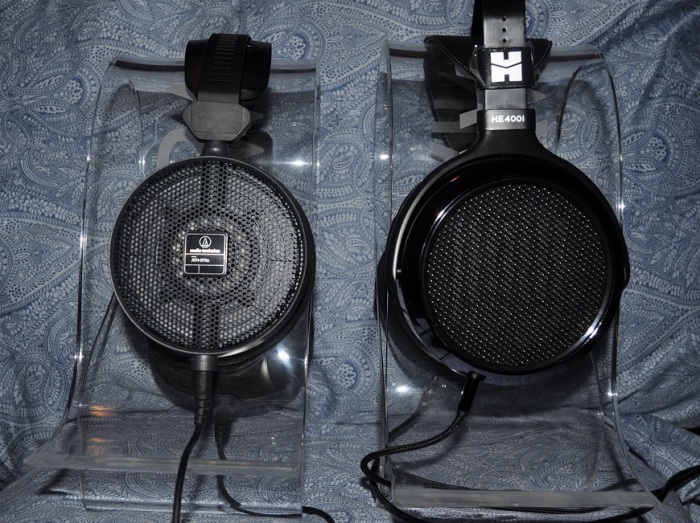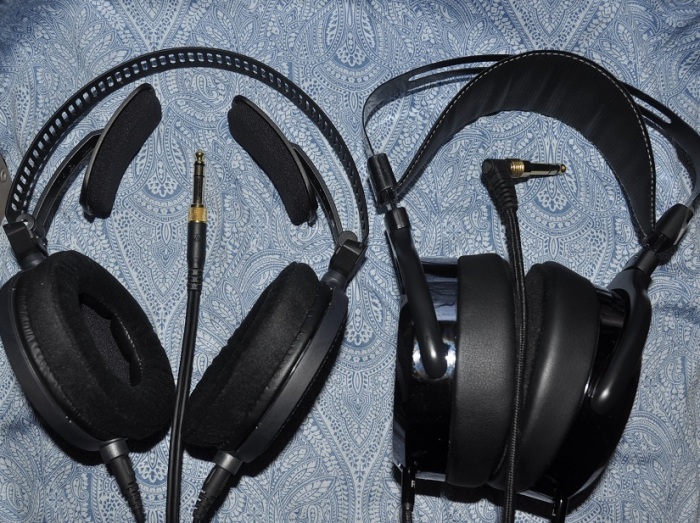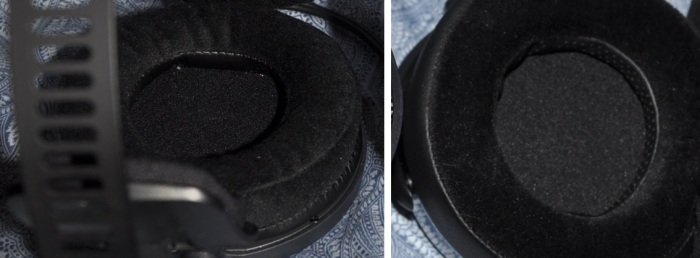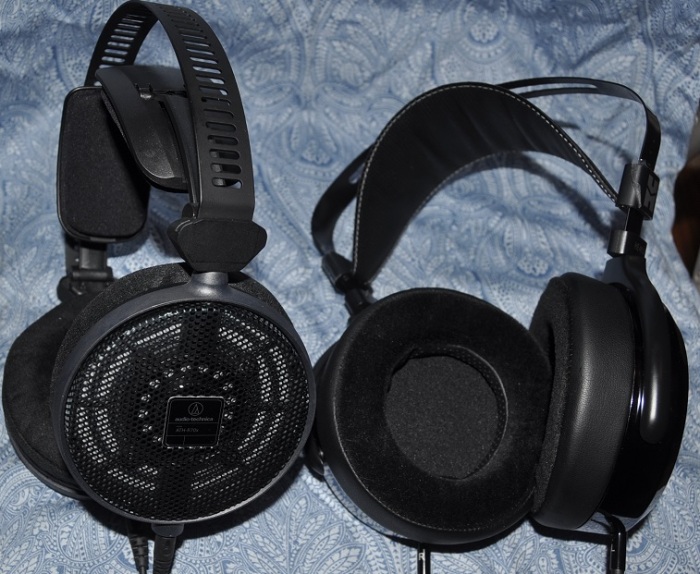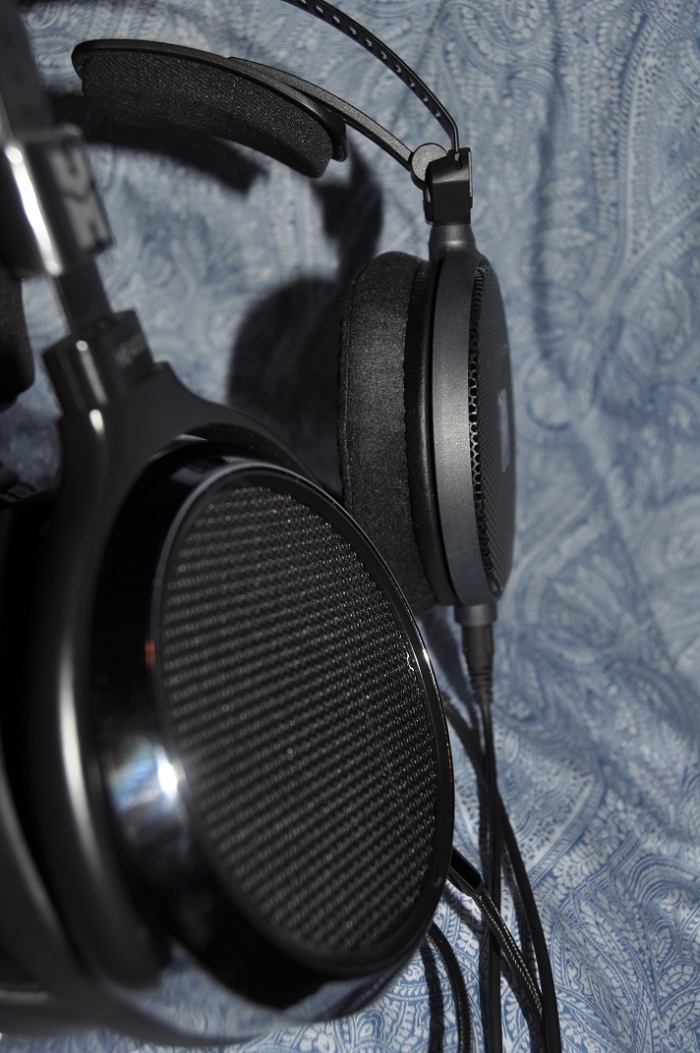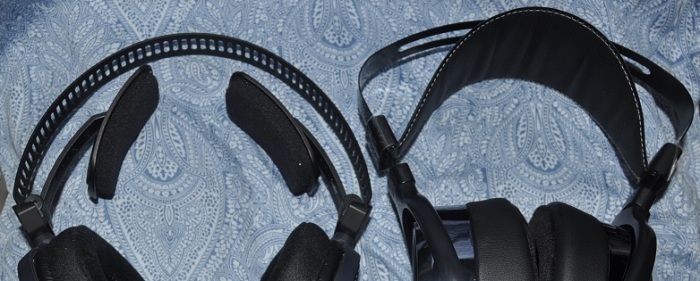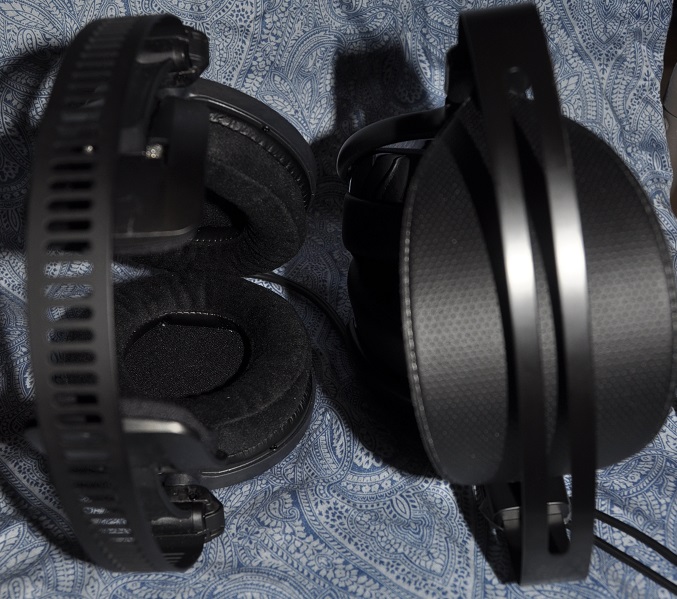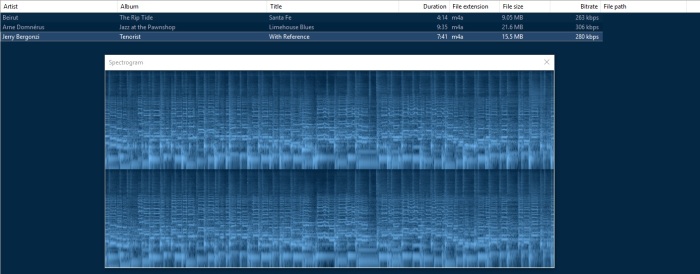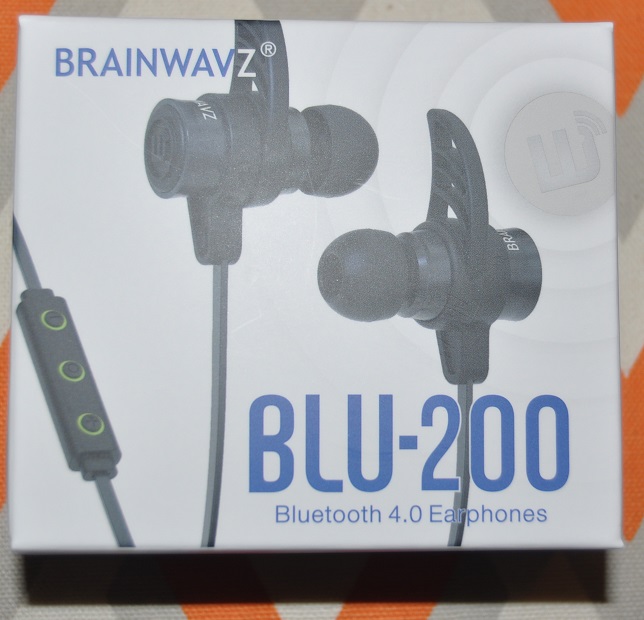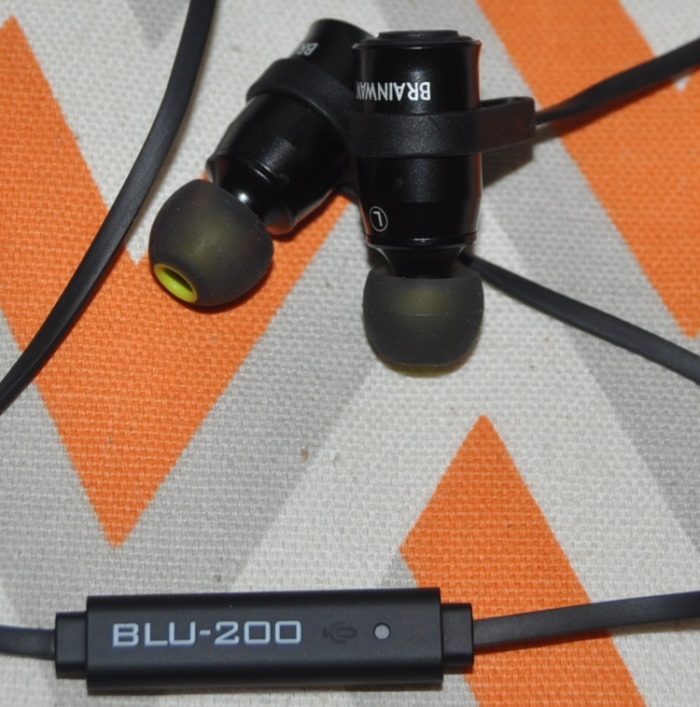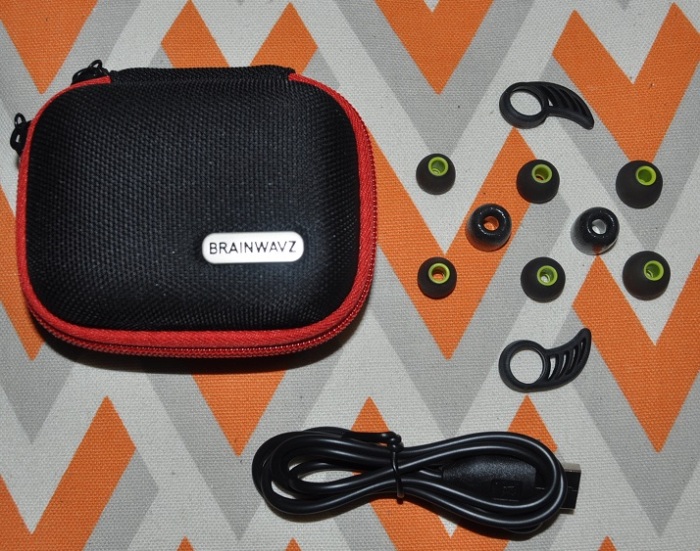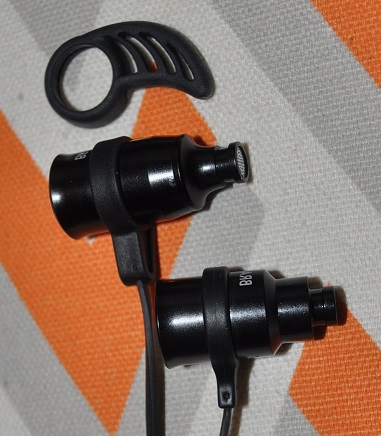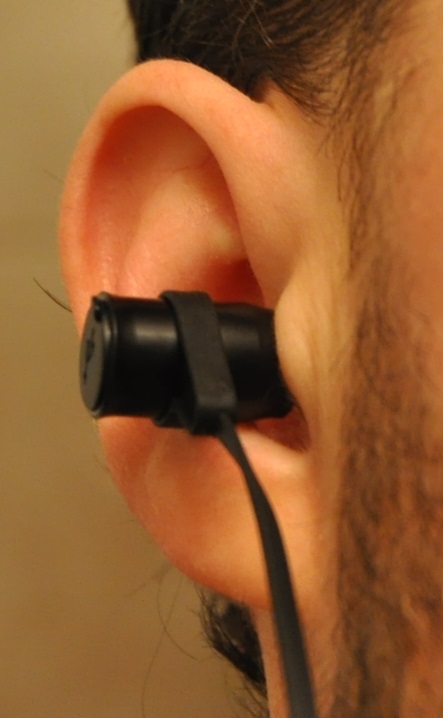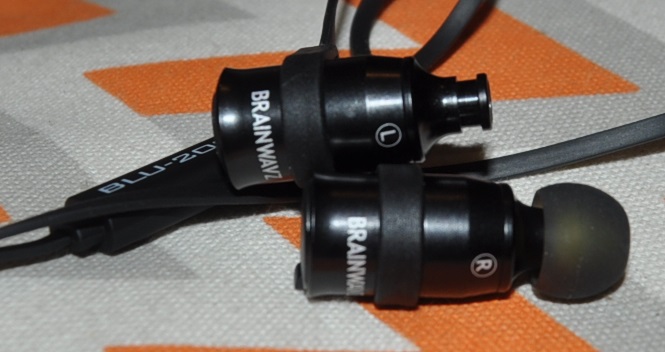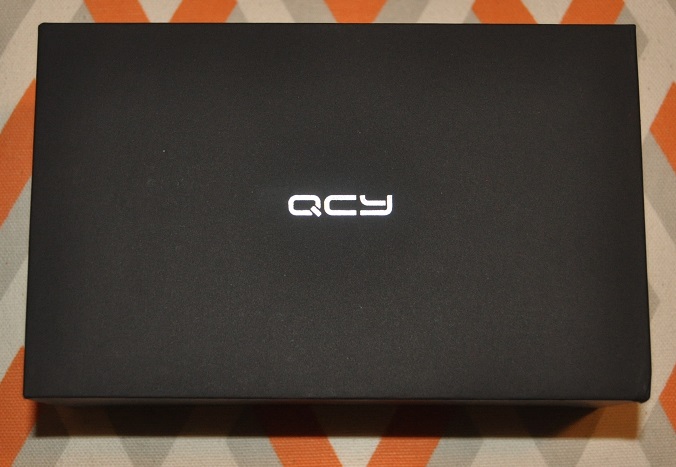
SPECS:
Bluetooth Version: V4.1+ EDR
Chip: CSR8645
Operation range: 10m
Wrap around cable length: 60.0cm
Weight: 0.65oz
Battery capacity: 90mAh
Charging time: 1-2 hours
Talking time: 7-8 hours
Standby time: 180 hours
Mic: Yes
WHERE TO BUY / COST:
$99.00 new ( Often found below $50 USD )
OVERVIEW
Laura Jia from Vafee reached out to me to see if I wanted to conduct a review of the QCY QY11 Bluetooth IEM. I have a ton of experience with IEMs and the QY11 intrigued me because of the behind the ear ear-hooks and overall design aesthetics. My primary focus is always on acoustics, but I do compare it to other IEMs in this review. The QY11 aims at “sounding balanced in pitch from bass, alto, to treble.” They also deliver a “premium sound to propel you through a vigorous workout.” How does the QY11 meet these goals?
AESTHETICS
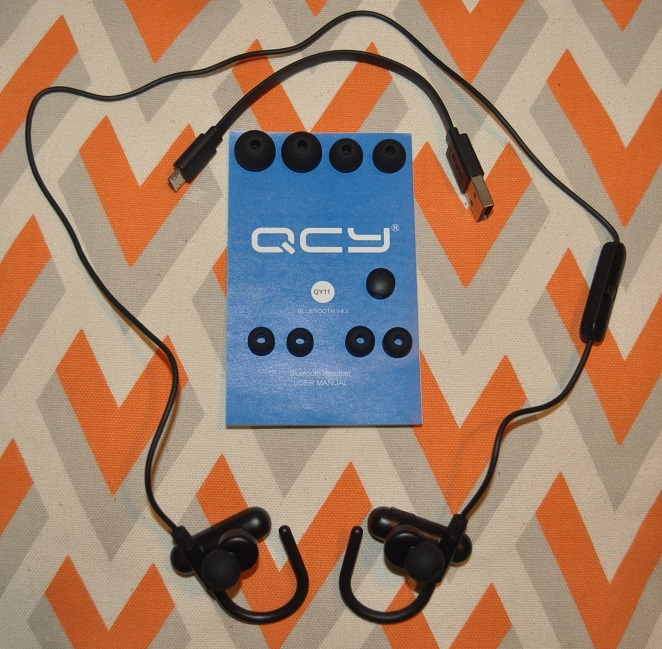
The QY11 is an exercise friendly IEM that comes with everything needed to get listening. The 8 different sized tips make finding the best seal easy and they are soft so no major discomfort should occur. I had to use two different sizes due to the soundstage shifting to the left if I left the default tips on. This was mainly due to the larger eartips bunching up in my ear canal and blocking the seal. Be sure to experiment with all of the eartips and find the best seal and look for a middle of the head soundstage.
Also provided is a very short USB to mico USB charging cable and a cleverly designed cable cinch. In-line is a 3-button remote and mic that allows for easy connecting to a Bluetooth device like an iPod or Andoid phone. For a Bluetooth IEM the QY11 is surprisingly comfortable and light. Other IEMs, like Brainwavz’s BLU-200 are difficult to fit and have larger driver nozzles adding to ear discomfort.
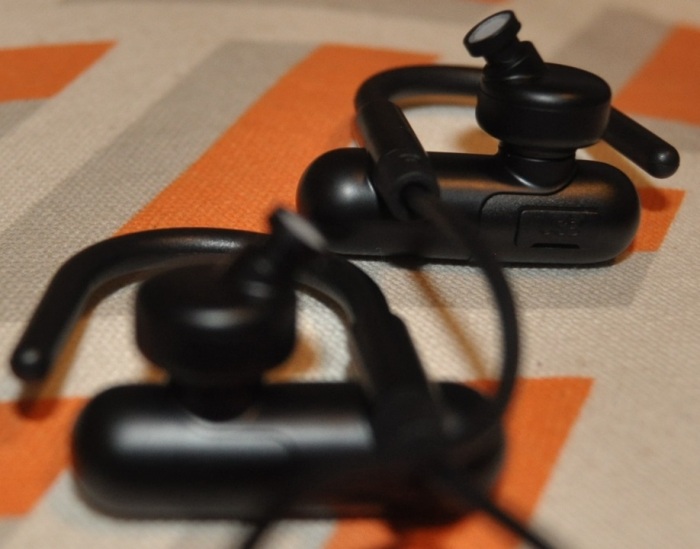
As you can see the nozzles are angled and have a small diameter. The driver body is round so no sharp edges push against the ear. Due to the angled nozzles and tip selection the QY11 is one of the best sealing IEMs I have tested. I ran my vacuum just to see if it could handle that level of noise and it blocked out 90% of it! If you want something to seal beyond reason the QY11 is the way to go.
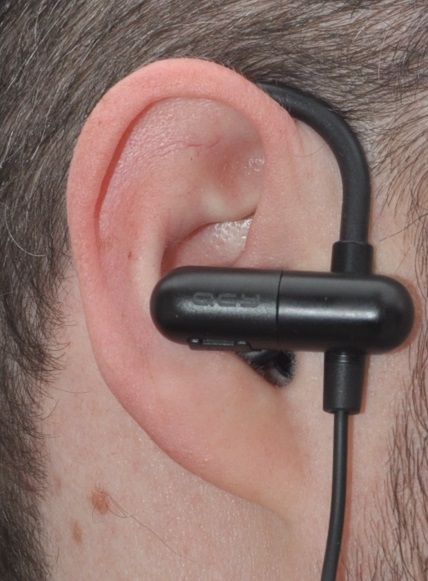
At first glance the ear-hooks look large, but I found them very comfortable they tucked behind my ears easily. Comparing them to the ear-hooks of the BLU-200 from Brainwavz, which go inside the ear, reveals how secure and comfortable an external hook can be. They secured the QY11 so well that I could not find a sane way to knock them out of my ears. Quite simply the most secure fit you can find in an IEM without going custom. The external ear-hooks are wonderfully comfortable, the angled nozzles make the seal aggressive, and the light weight design allows them to be used for exercise without getting in the way of the workout.
One caveat is that after an hour or more the inside of my Tragus started to hurt because the body, although round, protrudes directly into it.
ACOUSTICS
This is a Bluetooth only IEM so no amped testing was conducted. I used my iPod touch for the acoustic testing as it is my travel companion and exercise music source. I start with some standard hi-fi tracks to test the initial fidelity and then place it on random and start working out, moving around, and getting to know the sound.

I find compromises in the sound signature of every mid-level IEM I test. Usually they are much too bassy which is sad because a neutral IEM can be a delight and really shift the listener’s tastes to better recorded music. The QY11 is not super bassy nor is it going to be sibilant. I found it very polite and laid back meaning even at louder than normal listening levels all tracks I tested were easy to listen to and never became fatiguing, boomy, or bright.
Firing up Buddy and Julie Miller’s One Part, Two Part from their Written In Chalk album I started my soundstage test. This track has great instrument separation, a deep and spacious soundstage, along with being well recording. The QY11 rendered it nicely although simplifying the sense of space too much to be called hi-fi. To me this is more a matter of lack of treble extension and physical design more than just being bad in regards to soundstage. The music takes place in the middle of the sound field and remains a few rows back from the stage. This adds to the laid back sound. It reminds me of the Sennheiser HD600 at low volume levels in that it is so it can sound too polite at low volumes, but once the volume increases the dynamics come through much clearer.
I do feel that the treble extension could be better and with more energy at the top end of the spectrum the QY11 will approach a critical listening IEM, but let’s face it this is an exercise IEM. The treble clarity issue is easily discerned on Klaus-Peter Hahn’s Suite for Violoncello Solo No. 1 In G Major, BWV 1007: VI. Gigue on the Bach: the Complete Cello Suites album. The lack of air and reverb heard from the strings and the instrument resonators yield subdued instrument synergy and fail to bring out the essential overtones hidden in this track. I still enjoyed this track with the QY11, it just made me realize that this track is not what it should using an exercise IEM like the QY11.

I know a lot of you are concerned about the bass response and I want to cover it in detail. Most IEMS in the $50-$100 price range have silly amounts of bass making it boomy, bloated, and very sloppy on the low end. The QY11 is more neutral than IEMs known for their heavy bass, but they do can sound bassy at times. Take The Gorillaz’s Kids With Guns track. The bass line is thick and vibrant and due to the excellent seal the QY11 can deliver fun bass. Rest assured the QY11 has the bass covered, but is not going to render your eardrums numb.
The range of the Bluetooth signal stretches to 10 meters, but does run into issues going through doors and thick walls. I put it just below the BLU-200 from Brainwavz in regards to range and would not fault it for not having the best range as it is excellent, but not quite as good as some other Bluetooth gear I have tested.
The QY11 comes with an in-line mic so I tested it making a few calls on my Android phone. Clarity is excellent and the mic’s location is close enough to the mouth to not sound distant or muddled. Voices sound up-front, clear, and articulate. The mic is well above average for an IEM in this price point.
COMPARISON
I pit the QY11 against the Brainwavz BLU-200 because they are in the same price point, are both Bluetooth IEMs, and sound clear and fun. Both are designed with exercise in mind, but I find the QY11 trumps the BLU-200 in stability due to the external ear-hooks. The BLU-200 has the edge for comfort because it has a much smaller driver body. The BLU-200 is very up-front sounding while the QY11 is more laid back especially at lower volumes. Listening to Arne Domnetrus’ Limehouse Blues from the Jazz at the Pawnshop reveals the BLU-200 too bassy leading to a blurred midrange and unpleasant amount of oomph on the low end. Oddly the QY11 sounds more up-front with this track, but the bass is much more in check. They both sound too bassy to be considered hi-fi, but I found myself preferring the QY11 with this track because it has a more even sound signature. The BLU-200 sounds tinny in comparison with a strange dip in the frequency response appearing in the upper midrange. The QY11 is more efficient and is louder at the same volume level which will provide you with more headroom. The cable on the QY11 is quieter while exercising.
For general listening, where you never know what track is coming up next, I easily give the edge to the QY11 because of its laid back nature. The bass although abundant with the BLU-200 is richer and more airy so if it is bass you are after stick with the BLU-200. Both IEMs are great and have their strengths, but it comes down to comfort and sound signature preference. The BLU-200 is much more comfortable because its driver body is smaller. The QY11 has less prominent bass and lends itself to a much more even sound signature.
CONCLUSION
If you are looking for a good-sounding IEM that will seals ridiculously well and refuse to move during exercise the QY11 is for you! The sound signature is laid back making it easy to listen to at higher volumes. Some users may find the driver bodies uncomfortable after an hour or two, but with a little adjusting my ears would were free from the discomfort. The Bluetooth range is good enough to not tie you down to your player and the lack of cable noise makes the QY11 get out of the way of a workout.
